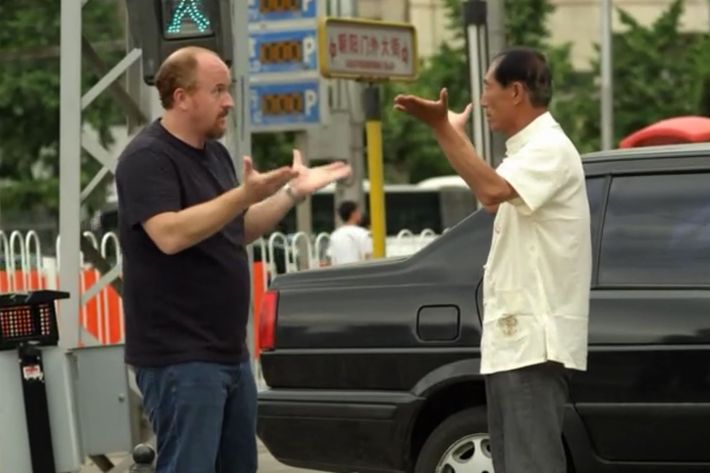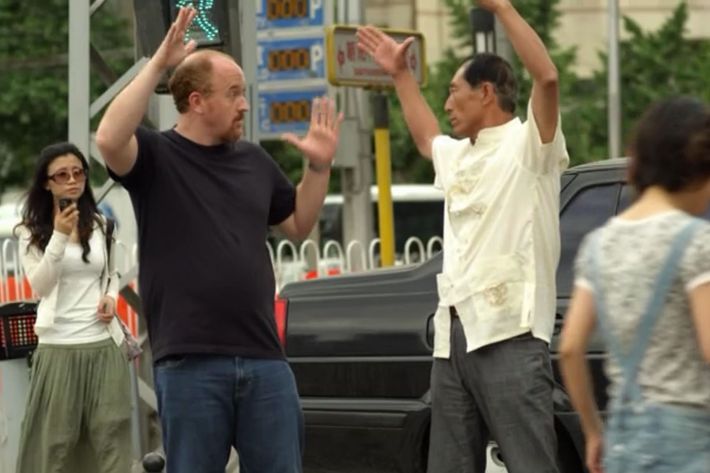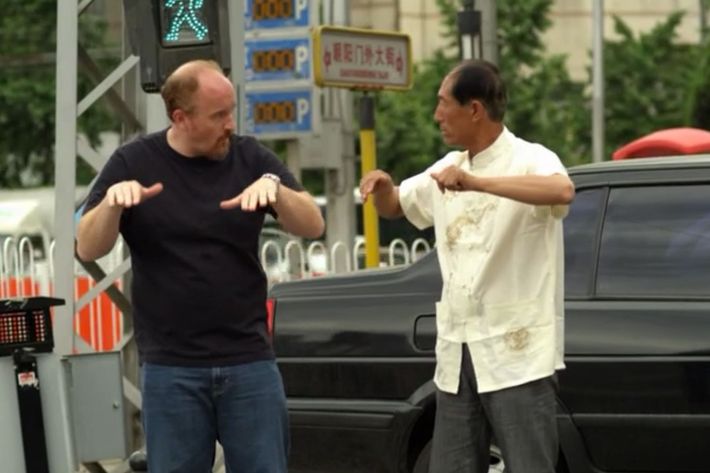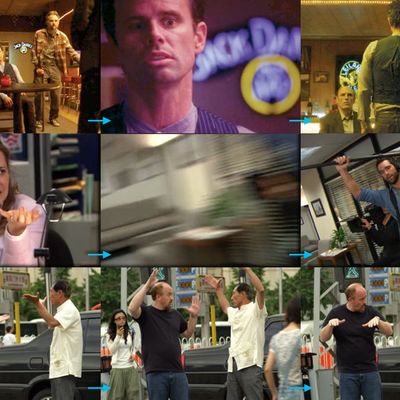
In our recap-dominated landscape, television shows tend to be judged primarily on their plot and dialogue, but TV is by its very nature — and name — a highly visual medium. Luckily, there’s no shortage of intensely cinematic experiences to be found around the dial. Here are my five favorite examples of visual wizardry from the past year.
5. The Americans: Gregory escorts Joyce Ramirez away from FBI agents, through a pet shop.
Episode: “Gregory”
Director: Thomas Schlamme
Cinematographer: Richard Rutkowski
The Americans has a knack for lacing sly visual jokes, and even metaphors, into throwaway shots. The third episode of the first season contains my favorite: radical turned KGB operative Gregory (Derek Luke) spirits the wife of a dead KGB agent away from federal agents by sneaking her through the front door of a pet shop and then out the back. The shot starts with them entering the store, swings left as they exit through the back, and then settles for half a second on a bird in a cage, which describes Joyce on two levels: as a “bird” (that is, a young woman) and as a potential canary or stool pigeon.
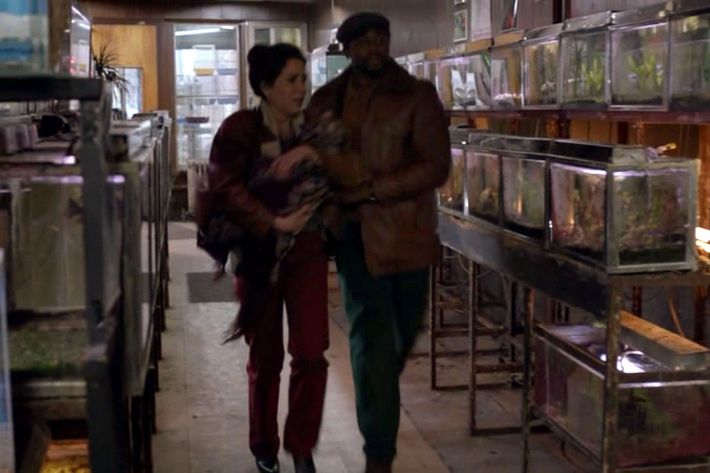
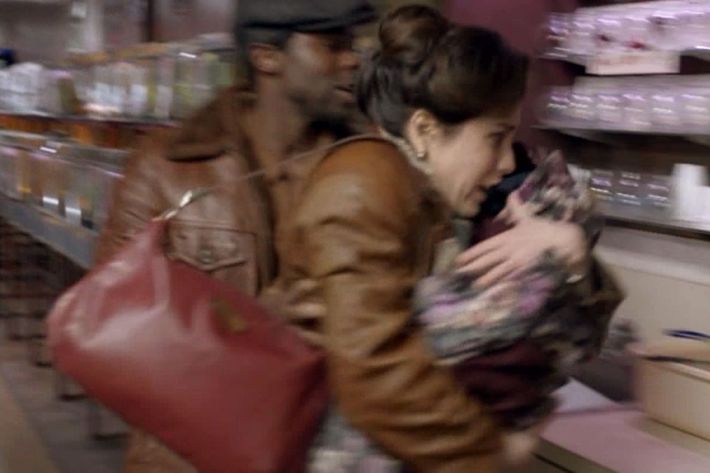
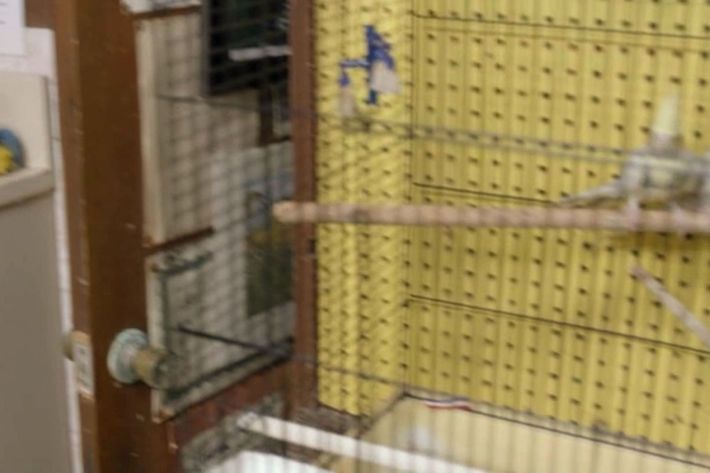
4. The Office: A crying Pam reaches out to the camera crew.
Episode: “Customer Loyalty”
Director: Kelly Cantley
Cinematographer: Randall Einhorn
You knew something was a little odd when Pam (Jenna Fischer) ended a phone argument with Jim (John Kraszinski) by weeping into her hands, then looking off-camera at somebody we couldn’t see. Then came a cut to a slightly different angle, focusing on Pam as she gestured to a boom operator, Brian, who was revealed in a whip pan. This was the first time in the show’s nine-season run that a member of the camera crew had spoken, which until now had begun to seem like an existential running gag, an unseen presence that was more a comedic conceit than a reality. Because of its content, this shot was the most visually startling moment in the whole run of the show, but the shock was amplified because it was enclosed within a variation of one of The Office’s workhorse camera moves. Only the odd rhythm of the shots and cuts in the scene tipped us off that, this time, something was different; we didn’t know exactly how until the camera settled on Brian.
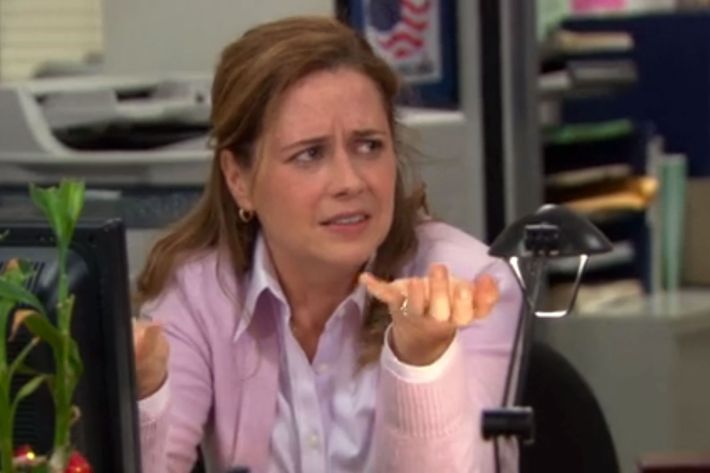
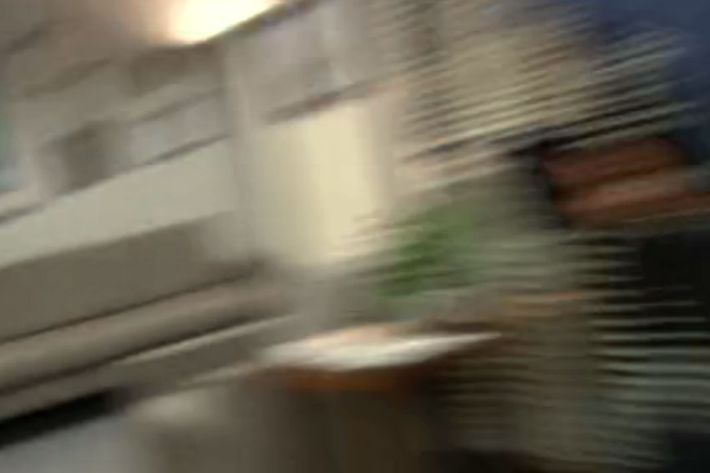
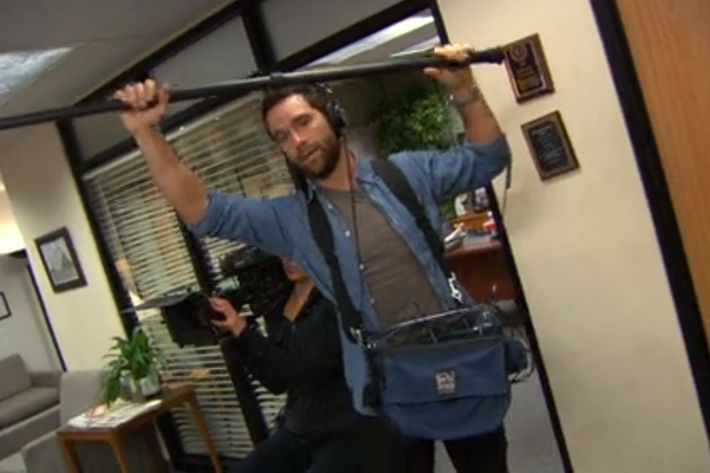
3. Game of Thrones: Catelyn Stark at the end of “The Rains of Castamere.”
Episode: “The Rains of Castamere”
Director: David Nutter
Cinematographer: Robert McLachlan
A devastating end to a brutal episode: Lady Catelyn Stark (Michelle Fairley), somehow still standing at the Red Wedding, offs the treacherous king’s young bride and then stands mute with horror, dead emotionally long before a goon slits her throat and lets her drop out of sight, leaving the frame empty. That empty frame sums up the aftermath of this literally killer installment: They’re all gone.
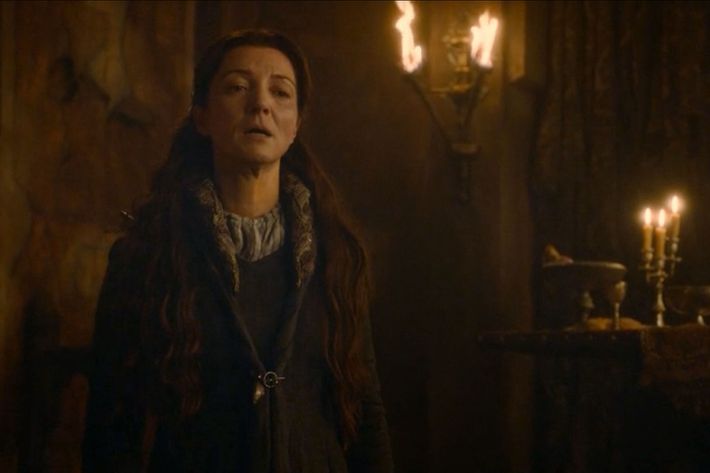
2. Justified: Boyd Crowder, verbal gunslinger.
Episode: “Outlaws”
Director: John Dahl
Cinematographer: Francis Kenny
This shot distills the FX drama’s five-season run down to one image. It’s a twist on the gunfighter facing down enemies at high noon on a dusty street: Walton Goggins’s Boyd Crowder taking on local power brokers who think they own him, only this time the action occurs in a cramped saloon. I love this shot so much I put it at the center of a piece on great TV direction. If the phrase “modern western” ever gets added to the dictionary, this should be the illustration.
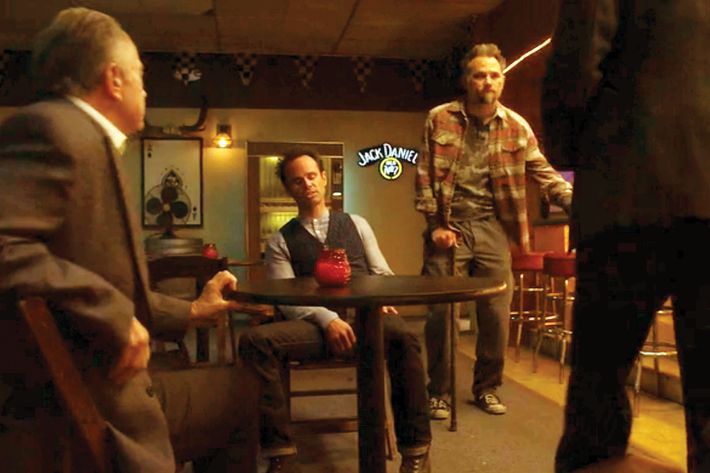
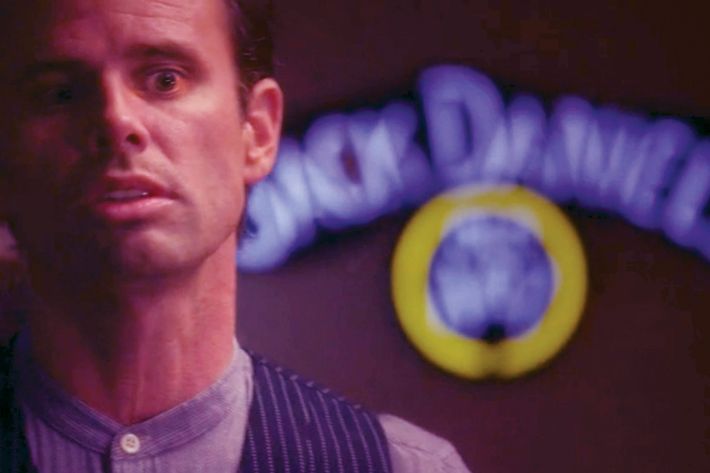
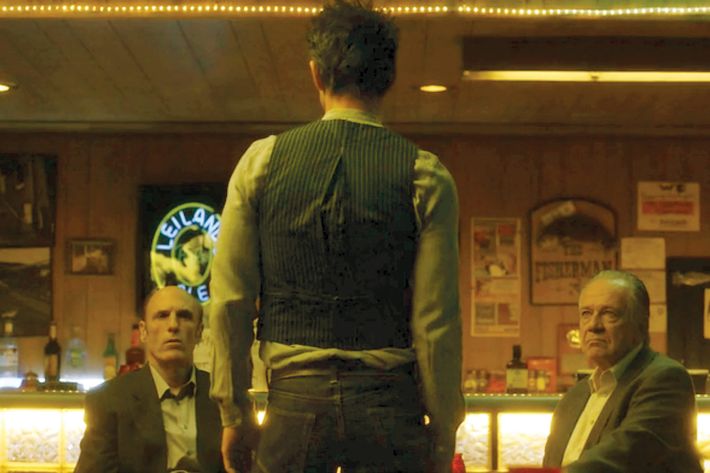
1. Louie: Louie communicates with a Beijing stranger.
Episode: “New Year’s Eve”
Director: Louis C.K.
Cinematographer: Paul Koestner
About two-thirds of the way through the sublime third-season finale of Louie — which I wrote about here — the hero (Louis C.K.), having flown to China in hopes of seeing the Yangtze River, is wandering through the streets of Beijing, asking for directions, when he stops and trades gestures with a stranger on the street. It’s a nonverbal improv moment. The gestures look faintly like tai chi exercises, but they’re just the sort of mirroring gestures that a child (in this case, our Yank hero) would make to an adult who’s trying to teach him to communicate. It’s that rarity in a scripted series: a moment that feels truly spontaneous. The second half of this episode blurs the line between scripted comedy and quasi-documentary improvisation, but this one shot, which lasts about 30 seconds and is mainly concerned with capturing a moment without editorializing it to death, takes the cake. It’s impossible to watch it without feeling a little bit better about our species.
